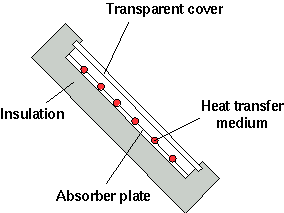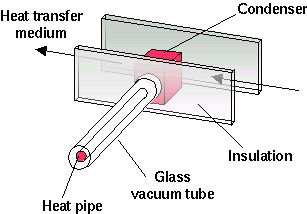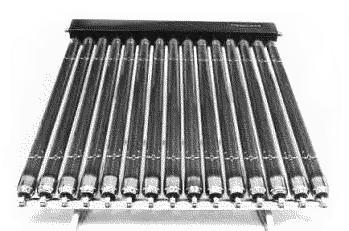|
|
|
Vacuum tube collectors
A more sophisticated systems involves a metal collector plate contained in an evacuated glass tube and placed at an angle. This avoids any convective losses from the collector plate (the same principle as a vacuum flask). A tube connected to the plate contains a fluid with a low boiling point which evaporates when heated by the sun. The vapour rises to the top of the tube where it exchanges its heat with a pipe containing water, condenses and returns to the bottom of the tube to be reheated. Vacuum collectors are more efficient than flat plate ones, converting 60-70% of the sun's energy to useful heat, and heating water to very high temperatures. System efficiencies, taking into account losses in pipework etc, are usually more like 50%.
|
|
|
System design
Provision must be made for a hot water tank, preferably close to the collectors to minimise pipework and heat losses. In most systems the circulant fluid is pumped through the tank and the collector, controlled by a sensor which detects that the collector fluid is at a higher temperature than that in the tank. If the hot water tank is higher than the collector then a thermosyphon system can be used in which the buoyancy of the heated circulant in the collector drives the fluid around.
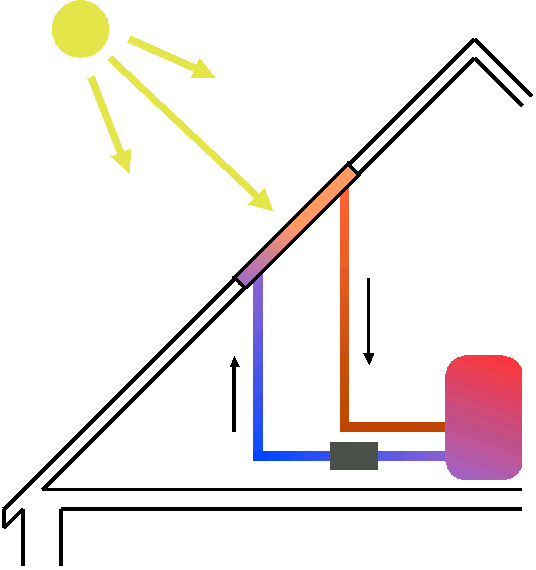
|
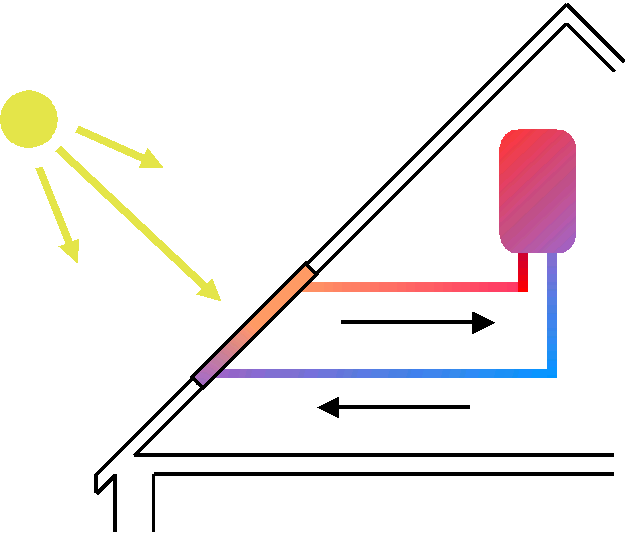
|
|
Pumped system
|
Thermosyphon system
|
Partly because the principal market is for retrofitting to houses, quoted prices for full installation are high, from £750-900 per square metre for flat plate collectors and £1300-1500 per square metre for vacuum tubes. However for larger installations, or multiple small installations, costs can be reduced to £500 per square metre or less. A well maintained system will have a lifetime of 20 years or more.
Further information can be obtained from the UK Solar Energy Society , the National Energy Foundation and Energy Efficiency Advice Centre and the National Energy Foundation's Renewable Energy Website
